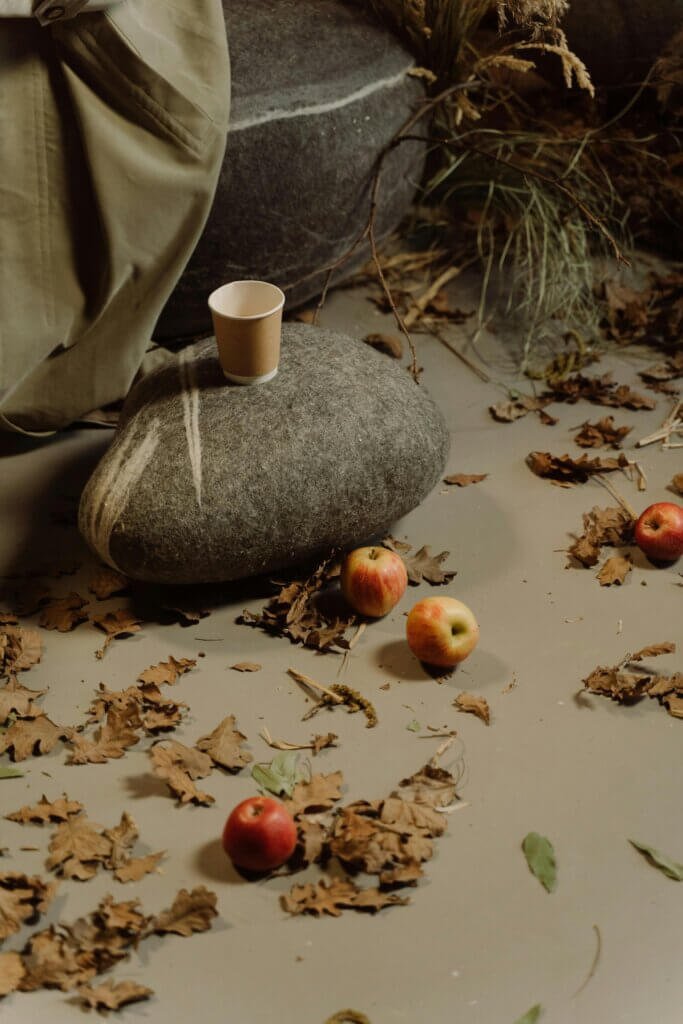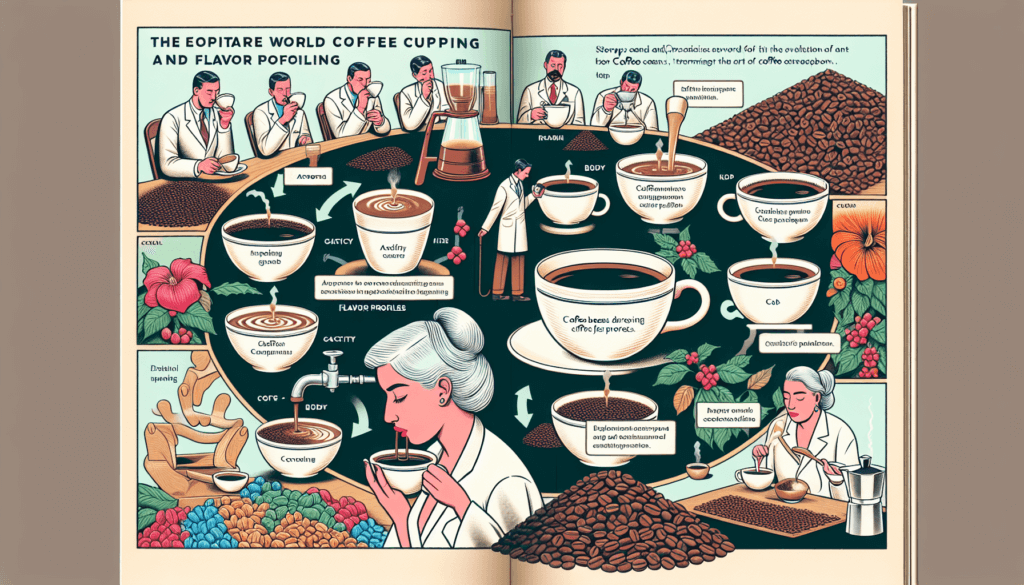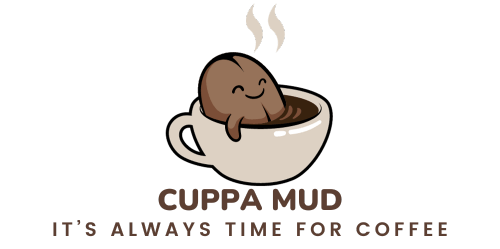If you’ve ever wondered how coffee professionals evaluate the flavors, aromas, and characteristics of different coffees, then you’re in for a treat. In “The Ultimate Guide To Coffee Cupping And Flavor Profiling,” you’ll discover the fascinating world of coffee cupping – a process that allows you to tap into the intricate nuances of every cup. Whether you’re a coffee enthusiast or aspire to become a coffee connoisseur, this article will take you on a delightful journey as you learn the art of tasting and analyzing coffee like a pro. Get ready to explore the vibrant world of flavors and uncover the secrets behind your favorite brews.
What is Coffee Cupping?
The definition of coffee cupping
Coffee cupping is a systematic and sensory evaluation method used to assess the aroma, taste, and overall quality of coffee beans. It involves a step-by-step process of observing the fragrance, aroma, flavor, acidity, body, aftertaste, and balance of the coffee through a series of controlled techniques. By cupping coffee, professionals in the coffee industry can gather valuable information about the beans’ characteristics, identify flavor profiles, and make informed decisions about roasting, blending, and brewing processes.
The origins of coffee cupping
Coffee cupping can be traced back to the 19th century when it was initially developed as a quality control method by coffee traders and producers. It has since evolved and become an essential practice in specialty coffee industry because of its ability to provide a standardized evaluation of coffee beans. The origins of coffee cupping can be attributed to those who sought to understand and appreciate the unique flavor profiles and qualities of different coffee origins, leading to the establishment of coffee cupping as a fundamental tool for sensory analysis in the coffee industry.
The purpose of coffee cupping
The primary purpose of coffee cupping is to evaluate and understand the sensory characteristics of coffee beans. It allows professionals in the coffee industry to identify flavor profiles, assess the quality and potential of different beans, and provide crucial information for purchasing, roasting, blending, and brewing decisions. Coffee cupping also plays a vital role in promoting transparency and ensuring consistency in the specialty coffee industry, as cupping scores and flavor profiles can be used as objective measures of quality, enabling consumers to make well-informed choices.
The Importance of Flavor Profiling
Understanding the significance of flavor profiling
Flavor profiling involves the identification and description of the specific flavors, aromas, and characteristics present in a cup of coffee. It is an essential aspect of the coffee cupping process as it helps coffee professionals and enthusiasts communicate and understand the distinct taste profiles of different coffee beans. By analyzing flavor profiles, coffee experts can recognize and appreciate the nuances and complexities of specialty coffees, enhancing the overall coffee experience for consumers.
How flavor profiling influences coffee quality
Flavor profiling has a direct impact on the perceived quality of coffee. Each coffee bean possesses its own unique flavor notes, which can range from fruity and floral to nutty or chocolaty. By accurately understanding and describing the flavors present in coffee, professionals can assess the quality of the beans and make informed decisions about purchasing, roasting, blending, and brewing. Flavor profiling also enables coffee tasters and buyers to identify any off-flavors or defects, ensuring that only the highest quality beans make it to the market.
The benefits of flavor profiling
Flavor profiling offers numerous benefits to both coffee professionals and consumers. For professionals, it provides a standardized language and framework for evaluating coffee, promoting consistency and transparency in the industry. It allows for better communication between coffee producers, roasters, and consumers, enabling them to share information and preferences effectively. Additionally, flavor profiling supports the development of unique and customized coffee blends, allowing coffee professionals to cater to the diverse tastes and preferences of consumers.

Preparing for Coffee Cupping
Gathering necessary equipment
Before conducting a coffee cupping session, it is essential to gather the necessary equipment. This includes cupping bowls or cups, cupping spoons, a cupping table or tray, a kettle for hot water, a timer, a scale for accurate measurements, and a cupping form for recording data. It is crucial to ensure that all equipment is clean and free from any residual flavors or odors that could affect the cupping experience. Using standardized cupping equipment allows for consistency and comparability across different cupping sessions.
Choosing the right coffee beans
Selecting the appropriate coffee beans is critical for a successful cupping session. Ideally, a variety of beans from different origins and with various flavor profiles should be chosen to allow for comparison and evaluation. It is important to consider factors such as freshness, roast level, and processing method when selecting beans. Using freshly roasted beans, preferably within two weeks of the roast date, ensures optimal flavor and aroma during the cupping process.
Understanding roast profiles
Roast profiles play a significant role in the flavor development of coffee beans. Different roast levels, such as light, medium, or dark, can significantly impact the taste and aroma of the coffee. Understanding roast profiles is essential for accurately evaluating the flavors and characteristics of coffee during cupping. It also allows coffee professionals to make informed decisions regarding the roasting process and create blends that highlight and complement specific flavor profiles.
Setting Up a Coffee Cupping Session
Arranging a cupping table
Creating a suitable cupping environment is crucial for accurate evaluation and comparison of coffee beans. Cupping tables are typically used to provide a stable surface for cupping bowls, spoons, and other necessary equipment. The table should be clean and free from any odors or distractions that could interfere with the cupping experience. It is also important to ensure that there is ample space between each cup to prevent cross-contamination of flavors.
Preparing the necessary cups and spoons
Clean cupping bowls or cups are essential for conducting a cupping session. Ceramic or glass cups are commonly used, as they do not absorb flavors and allow for accurate aroma and flavor perception. Cupping spoons with shallow bowls and long handles are used for slurping and evaluating the coffee. Before cupping, it is essential to rinse the cups and spoons with hot water to eliminate any residual flavors that may affect the cupping experience.
Ensuring proper lighting and ventilation
Good lighting and ventilation are essential for a successful cupping session. Natural, diffused lighting is preferred to accurately assess the color and clarity of the coffee. Adequate ventilation helps dissipate any lingering aromas and prevents sensory fatigue. The cupping room should be free from strong odors or drafts that could affect the perception of flavors and aromas. Maintaining a controlled and pleasant environment enhances the cupping experience and allows for accurate evaluation of the coffee.

Step-by-Step Coffee Cupping Process
Observing the dry fragrance
The cupping process begins by observing the dry fragrance of the coffee beans. Approximately 12 grams of freshly ground coffee are placed in each cup, and the aroma that is released is evaluated. This step helps identify any pre-brew scents and gives a glimpse into the potential flavors that may develop during brewing. The dry fragrance can provide valuable insights into the nature of the beans and their flavor profiles.
Adding hot water and smelling the wet aroma
Hot water is then poured over the grounds, ensuring an even saturation. The coffee is left to steep for a specific amount of time, usually around four minutes, before the wet aroma is evaluated. The aroma released during this step provides further insight into the potential flavors that will develop during the tasting process. Sniffing the wet aroma allows cuppers to detect any changes or intensifications in aroma compared to the dry fragrance.
Breaking the crust and assessing the aroma
After steeping, the crust formed on the surface of the coffee is gently broken by stirring the cupping spoon. This releases a burst of aroma, which is immediately evaluated by leaning close to the cup and taking in the aromas. The aromas released after breaking the crust can provide valuable information about the flavors and characteristics of the coffee. Cuppers pay attention to the intensity, complexity, and balance of the aromas to gain insights into the coffee’s potential quality and taste.
Evaluating Flavor and Body
Analyzing the flavor notes
To evaluate the flavor of the coffee, cuppers slurp the liquid from the cupping spoon into their mouths, allowing it to cover their entire palate. This slurping technique helps aerate the coffee and distribute it evenly, enhancing the perception of flavors. Cuppers assess the complexity, intensity, and balance of the flavors, paying attention to specific notes such as fruitiness, acidity, sweetness, bitterness, or any unique characteristics. Accurate flavor evaluation provides crucial information about the coffee’s quality and taste profile.
Assessing the acidity levels
Acidity is a vital component of coffee flavor and refers to the perceived brightness or liveliness in the cup. Cuppers assess the acidity levels by evaluating the crispness, sharpness, or tanginess of the coffee. The acidity can range from bright and vibrant to mellow and smooth. A well-balanced acidity contributes to the overall flavor profile, while excessive or lack of acidity may indicate quality issues or affect the enjoyment of the coffee.
Understanding the body and mouthfeel
Body, also known as mouthfeel, refers to the texture and weight of the coffee on the palate. It can range from light and delicate to full and heavy. Cuppers evaluate the body by assessing the viscosity, thickness, and smoothness of the coffee. The body of the coffee can influence the overall perception and enjoyment of the cup. A well-rounded and balanced body contributes to a satisfying and pleasurable coffee experience.

Assessing Aftertaste and Balance
Evaluating the lingering aftertaste
Aftertaste refers to the flavors that remain in the mouth after swallowing the coffee. Cuppers evaluate the aftertaste to assess the length and quality of the flavors that persist. A long and pleasant aftertaste indicates a high-quality coffee with desirable flavors. Cuppers pay attention to any lingering bitterness, sweetness, acidity, or other unique flavors that may affect the overall enjoyment of the cup. The aftertaste provides valuable insights into the coffee’s complexity and depth of flavors.
Finding a balanced cup
Balance is a crucial aspect of evaluating coffee quality and flavor. Cuppers assess the overall harmony and integration of the flavors, acidity, body, and aftertaste in the cup. A well-balanced cup offers a combination of flavors that complement and enhance each other, providing a satisfying and enjoyable coffee experience. Evaluating the balance helps identify any flavor imbalances or inconsistencies that may affect the coffee’s quality.
Identifying any off-flavors or defects
One of the essential aspects of coffee cupping is identifying any off-flavors or defects that may be present in the coffee. Cuppers are trained to recognize common defects such as mold, fermentation, or papery tastes. Detecting these defects helps ensure the quality and safety of the coffee. Additionally, identifying off-flavors enables coffee professionals to make informed decisions regarding purchasing, blending, and brewing processes to deliver high-quality coffee to consumers.
Recording Cupping Data
Developing a cupping form
A cupping form is a standardized tool used to record data and observations during the cupping process. It typically includes sections for noting the bean origins, roasting profiles, aroma, flavors, body, aftertaste, and any defects or off-flavors detected. Developing a cupping form that suits the specific needs and preferences of the coffee professional or organization ensures consistent and accurate record-keeping. Cupping forms facilitate data comparison across different cupping sessions and provide a valuable reference for future assessments.
Taking detailed notes on aroma, taste, and texture
During the cupping process, detailed notes should be taken to capture the specific aroma, taste, and texture characteristics of each coffee. These notes should be descriptive, accurate, and consistent to facilitate comparisons and evaluations. Cuppers may use adjectives, analogies, or references to other flavors to effectively communicate their sensory experiences. Detailed notes on aroma, taste, and texture provide a comprehensive understanding of the coffee’s flavor profile and assist in making informed decisions regarding purchasing, roasting, and blending.
Creating a scoring system
Scoring systems are often used in cupping to provide a numerical value that represents the quality and characteristics of each coffee. These scoring systems can vary, but they typically evaluate factors such as aroma, fragrance, flavor, body, acidity, aftertaste, and balance. By assigning scores to different attributes, cuppers can objectively rate and compare coffees, allowing for accurate assessments and informed decision-making. Creating a scoring system ensures consistency and allows for effective communication within the coffee industry.

Interpreting Flavor Profiles
Identifying flavor characteristics
Interpreting flavor profiles involves identifying and understanding the specific flavor characteristics present in a cup of coffee. Cuppers analyze the notes and descriptors used to describe the coffee’s aroma, taste, and overall profile. By identifying flavor characteristics, coffee professionals can accurately communicate and understand the unique taste profiles of different coffees, providing valuable information for purchasing, roasting, blending, and brewing decisions. Identifying flavor characteristics helps coffee enthusiasts appreciate and enjoy the diverse range of flavors coffee has to offer.
Understanding the SCAA flavor wheel
The Specialty Coffee Association of America (SCAA) flavor wheel is a visual tool that helps coffee professionals identify and describe the flavors found in coffee. It provides a standardized language and framework for discussing and categorizing flavor characteristics. The flavor wheel is divided into broad categories such as fruity, floral, nutty, and chocolaty, with subcategories and specific descriptors within each category. The SCAA flavor wheel assists in categorizing and understanding the complex and nuanced flavors present in coffee.
Connecting flavors to coffee origins
Flavor profiling has the added benefit of helping coffee professionals connect specific flavors to the origins of the coffee beans. Coffees from different regions, climates, and soils often exhibit distinctive flavor characteristics influenced by their terroir. For example, Ethiopian coffees are known for their fruity and floral notes, while coffees from Central America often have bright acidity and chocolatey flavors. Understanding the connection between flavors and coffee origins allows for more targeted sourcing, roasting, and blending decisions, resulting in a more personalized and unique coffee experience.
Applying Flavor Profiling in the Coffee Industry
Roasting techniques based on flavor profiles
Flavor profiling plays a crucial role in determining the most suitable roasting techniques for different coffee beans. By understanding the desired flavor profiles and characteristics of a coffee, roasters can tailor their roasting profiles to enhance and highlight those specific flavors. Lighter roasts tend to preserve the unique origin characteristics, while darker roasts develop bolder and more caramelized flavors. Roasting techniques based on flavor profiles ensure that the coffee’s inherent qualities are accentuated, providing a satisfying and enjoyable cup of coffee.
Creating coffee blends for specific flavor profiles
Flavor profiling allows for the creation of unique and customized coffee blends that cater to specific flavor profiles and preferences. Coffee professionals can combine beans from different origins, roast levels, and varietals to develop blends that offer a perfect balance of flavors and characteristics. By understanding the flavor profiles and complexities of different coffees, roasters can create harmonious and well-rounded blends that deliver a consistent and exceptional coffee experience to consumers.
Utilizing flavor profiling in barista competitions
Flavor profiling is essential in barista competitions, where competitors showcase their skills in brewing and presenting exceptional coffees. Baristas utilize their knowledge of flavor profiles to select the most suitable beans, roasts, and brewing methods that highlight the desired flavors and characteristics. By accurately identifying and presenting the flavor profiles of their chosen coffees, baristas can effectively communicate their expertise and provide a memorable sensory experience to the judges and audience. Flavor profiling is a crucial tool in enhancing the presentation and overall success of barista competitions.
In conclusion, coffee cupping and flavor profiling are integral practices in the coffee industry. Through the systematic evaluation of coffee beans, professionals can identify flavor profiles, assess quality, and make informed decisions regarding roasting, blending, and brewing processes. Preparing for a cupping session involves gathering the necessary equipment, selecting the right coffee beans, and understanding roast profiles. Setting up a cupping session requires arranging a cupping table, preparing cups and spoons, and ensuring proper lighting and ventilation. The step-by-step cupping process involves observing the dry fragrance, smelling the wet aroma, and assessing the aroma after breaking the crust. Evaluating flavor and body includes analyzing flavor notes, assessing acidity levels, and understanding body and mouthfeel. Assessing aftertaste and balance involves evaluating the lingering aftertaste, finding a balanced cup, and identifying any off-flavors or defects. Recording cupping data includes developing a cupping form, taking detailed notes, and creating a scoring system. Interpreting flavor profiles allows for identifying flavor characteristics, understanding the SCAA flavor wheel, and connecting flavors to coffee origins. Finally, applying flavor profiling in the coffee industry involves using roasting techniques based on flavor profiles, creating coffee blends, and utilizing flavor profiling in barista competitions. By implementing these practices, the coffee industry can achieve consistent quality, unique flavor experiences, and elevate the overall appreciation of coffee.



